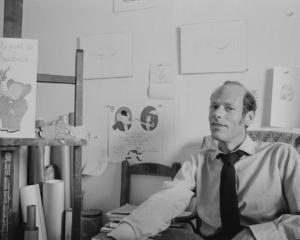The Woman in the Wood, by Lesley Pearse, is perfectly acceptable and inoffensive. Thus it's ultimately forgettable, too.
THE WOMAN IN THE WOO
Lesley Pearse
Penguin Random House

A quick Google search reveals her novels are often set in post-war Britain and centre on courageous girls/women facing adversity/danger/family secrets that stand in the way of happiness and love, and her latest offering is no exception.
The story opens in 1960, when the father of 15-year-old twins Duncan and Maisy Mitcham sends his wife to a psychiatric hospital and his children to Nightingales, his mother’s country house near Burley.
Although angered by their father’s apparent eagerness to divest himself of all emotional encumbrances (and by their grandmother’s equally indifferent treatment of them), they soon grow close to Nightingales’ housekeeper and revel in the freedom the countryside affords.
For the first time the twins also begin to develop separate interests; Maisy taking dancing lessons and making her first tentative steps towards romance while Duncan roams the woods and cultivates a friendship with Grace Deville, a reclusive woman whose refusal to interact with her neighbours has earned her a reputation as a witch.
Then first Duncan and later Maisy are kidnapped by a predatory paedophile. When the police investigations founder, Grace takes it upon herself to rescue them and in so doing begins to re-engage with society, while the twins’ father and grandmother realise they need to learn to acknowledge and express their feelings.
There is a lot of potential for suspense and psychological drama in this plot, but none of it is fully realised. The action is uneven and dramatic, events seem too implausible to allow the suspension of disbelief, and Pearse adopts a "tell don’t show" approach to her storytelling so that, although much time is given to Maisy, her voice remains the same at 18 as it was at 14.
As a result I felt no real attachment to her and there was little sense she has been substantially changed by events. My major disappointment, however, was that although the title (and the publicity) suggests Grace’s story is at the heart of the book and offered great potential, her character is two-dimensional and colourless and her history is, for the most part, unexplored.
Easy to pick up and put down, The Woman in the Wood is a perfectly acceptable and inoffensive light read, but I would love to see what somebody like Joyce Carol Oates or Gillian Flynn would have done with it.
Like certain famous fast-food franchises it is a novel that will appeal to a broad market, but one I found bland, unsatisfying and ultimately forgettable.
- Cushla McKinney is a local scientist and dreamer.











